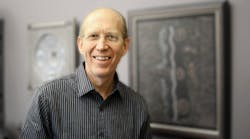When we get involved in education, we usually do it to directly benefit our children and grandchildren. We make sure they go to a good school; we consider reputation, location, curriculum, scheduling, and extracurricular activities. Once that is settled, have we done our job?
We could look at our education community and become active in providing opportunities for all children. We might volunteer in our school district in a parent-teacher organization, reading program, mentoring plan, or participate in passing referenda and other activities.
Our community is typically a satellite of a central population hub. Do we ever look at how healthy (in terms of achievement, testing, graduation rates) our state’s main metropolitan school district is? Can we step outside our local school district and support the metropolitan school district to keep the county and region healthy?
Do we wonder how our state ranks nationally in achievement, graduation rates, and participation in free-and-reduced lunch programs? Programs and policies “race to the top” so that we promise “no child left behind,” but do we know much about their objectives and effectiveness? How can we help address gaps in equity, achievement and quality of education? After all, we elect leaders to address these issues, to raise national awareness and to enact legislation improving education. Make a point to research how your federal tax dollars are appropriated and what is being done to improve education in our country.
Don’t stop there; look beyond our country’s borders. Can we individually improve education worldwide? You may not realize it, but you already are. The United States Agency for International Development (USAID) has been supporting international education for many years. The federal taxes you pay are used for teacher training, improving educational curriculum, building new schools and additions, and other activities to improve education internationally. You may welcome this effort or wonder why we do this when we have so many unresolved issues at home.
Your opinion may be that it’s the responsibility of the United Nations, World Bank, and other international organizations to fund education improvement worldwide. South Korea, Japan, Germany, and many other nations independently fund projects to improve education infrastructure in the Middle East, Africa, Asia and Latin America. USAID funds education projects including teacher training, early childhood reading programs, school construction, expanding access to higher education and workforce development, addressing youth in crisis-and-conflict situations, and improving education equity for girls.
For instance, USAID is the largest education donor for the Kingdom of Jordan, a relationship that began in 1949. In 2006 USAID embarked on a special project to fund and manage the design and construction of 25 new public schools for the Kingdom’s Ministry of Education. The schools, each housing approximately 1,000 K-12 students, were built in an effort to reduce school overcrowding and double-shifting, and to replace inadequate rented facilities in poor condition. The Jordan Schools Project directly and indirectly affected more than 150,000 children. As a result of its success and due to the influx of Syrian refugees into the country, USAID is engaging in designing and constructing 25 more schools through the Schools for a Knowledge Economy Project. This is only one example of USAID’s involvement worldwide, your tax dollars at work, improving education for those in need.
The next time you think about the education of your child or grandchild, expand your vision regionally, nationally, and around the world.


